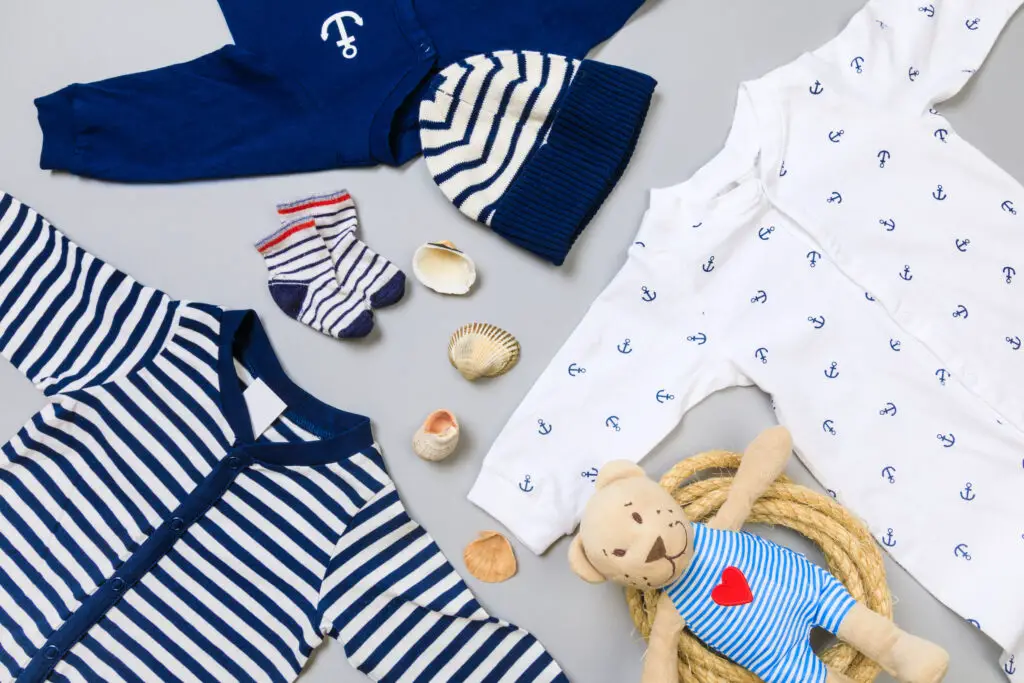
Many people are inspired to start sewing when they discover that there’s a baby on the way. Baby clothes can be quicker to make than larger garments and they allow lots of room for creativity. But if you’re going to make clothes the baby will be safe and comfortable in, it’s important to choose the right fabrics.
Protecting the Skin
The first thing to look for when choosing fabric for baby clothes is softness. This doesn’t just mean that they should have a yielding texture. It’s important that the surface of the fabric is soft and non-abrasive, so it doesn’t damage babies’ delicate skin. The most sensitive skin on an adult is the underside of the forearm, so try stroking the fabric there to see how it feels.
Although they feel soft, woollen fabrics designed for adults are not always suitable for adults. You should avoid wool unless it is the very softest grade, such as merino This is all the more important because wool irritating the skin in infancy can cause lanolin allergies to develop in later life.
It’s also important for babies’ skin to be able to breathe properly, so close-woven synthetic fabrics such as nylons are generally a bad idea. Natural fabrics such as cotton are much better and can also protect the baby in other ways because they’re more resistant to fire.
Avoiding Toxins
Babies can absorb toxins through their skin and because they’re smaller than adults, it’s much easier for them to get a dangerous dose. They also tend to chew their clothes, so it’s important to make sure that everything they wear is toxin-free. Although they’re soft, it’s best to avoid silks when making baby clothes because the processes used to finish them can leave toxic residues in the fabric.
Some fabric softeners and conditioners can themselves be toxic, so it’s a good idea to wash any fabric you buy for making baby clothes before you start sewing – after all, you don’t know what they’ve been cleaned with before going on display. Some dyes are also toxic – be especially wary of bright yellow fabrics which often contain chromium compounds that can react with babies’ urine.
Fun Fabrics
Because babies are just learning to move around, it’s important that they don’t wear clothes that restrict their movements. Fabrics with a bit of stretch are much more fun for them to wear. Some stretch fabrics, however, are less safe than others. It’s important to avoid fabrics supported by a lycra weave, as over time, when the fabric wears, the threads of lycra can come loose and can be pulled out and eaten.
Babies are drawn to fabrics with interesting textures. Cotton velvets, towelling fabric and kohair are safe, breathable options that will appeal to their sensitive fingers.
Fabrics that Last
Babies grow fast, so whatever you make, the chances are they won’t be wearing it for very long. Baby clothes often get passed down to further children, however, so it’s worth choosing fabrics that are not only safe for the baby but also safe from the baby.
Choosing fabrics that don’t fray is always wise when making baby clothing, as no matter how carefully you sew babies will often manage to pull hems apart. If you can’t find a suitable fabric of this type for want you want to make, use an extra layer of ribbon to protect the hem. (Inside seams are less of a problem as they don’t catch babies’ attention in the same way.)
Baby clothes last best if they are made of fabrics that can be pulled in different directions without tearing. Once again, loose weave cotton is an excellent choice for this, as is soft wool. If you make the right choices, you can create clothes that generations of babies will love to wear.
